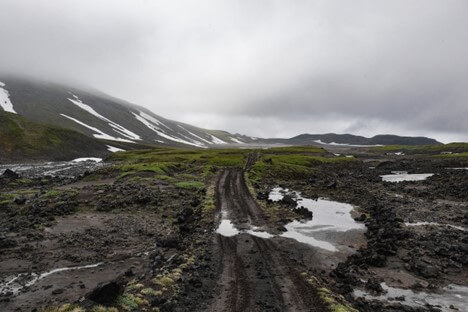The mysterious sound that gives off an earthquake-like effect has been a frequent occurrence in cold places. Frost Quakes are unusual seismic occurrences that differ from regular earthquakes in terms of their magnitude and cause.
These earthquake-like natural events mostly occur in the cold and temperate regions of Earth. They are a result of weather conditions rather than tectonic plate movements. So, calling it an earthquake would be a big mistake as Frost Quakes are not that similar to earthquakes, at least in their origin. This article delves into the intriguing world of frostquakes, examining their frequency, features, and the enigmatic relationship between seismic energy and freezing temperatures.
Understanding Frost Quakes
Frost quakes can produce rumblings similar to earthquakes and cause cracks in the ground, foundations, and roads. However, they are usually mild, localized, and can go unnoticed by seismographs. Frostquakes are caused by the rapid freezing and expansion of water-saturated soil, which fractures the rock and soil beneath it.

The process resulting in Cryoseism begins when the soil is saturated with precipitation, whether it be rain, snowmelt, or a wintry mixture. Soil temperatures rapidly drop 48 hours after the precipitation stops due to an abrupt drop in air temperatures, which typically occurs during an Alberta clipper event or polar vortex outbreak.

Water contained in the soil’s pores freezes when the temperature drops to about freezing, putting pressure on the bedrock and frozen soil. The ground cracks as a result of the pressure building up inside it, releasing a seismic energy wave.
Features of Frost Quakes
In contrast to regular earthquakes, frost quakes are distinguished by their small magnitudes, which are frequently too faint to show up on seismographs. Their impact is limited to a few hundred yards from the point of origin, making them highly localized. Frost quakes also have a unique timing; they usually happen in the coldest part of the night, between midnight and dawn. Since many people may have experienced frost quakes without realizing it, this nocturnal phenomenon adds to the mystery surrounding them.
The scientific term for frost quakes, cryoseism, clarifies the relationship between seismic activity and freezing temperatures. Such events, called “ice quakes,” can happen within bodies of ice, so this weather-driven seismic phenomenon is not limited to soil that has accumulated water in it. The quick freezing of water or ice causes stress on the surrounding material, which in turn releases seismic energy, which is the mechanism underlying cryoseism.

Frost Quake is a common natural occurrence in places where the temperature drops drastically in a short time. However, not all cold places or low-temperature regions will cause Cryosiesm. If the area has snow covering the layer of ground then the freezing cold air won’t reach the soil and rocks underneath the ground. As a result, the condition of the area has to be optimal for frost quake to take place.

Factors Affecting Frost Quake Severity
New research from the University of Oulu in Finland has revealed that the depth of the frozen soil layer is a significant factor affecting the severity of frostquakes. Frostquakes happen when thermal stress from a sudden drop in temperature exceeds the strength of the frozen layer. This finding creates opportunities for more investigation, such as examining the role that different soil types play in the formation of frost earthquakes. Better forecasting and a greater comprehension of these events may be possible if specific soil types are found to be more prone to them.
Conclusion

Similar to earthquakes, scientists and meteorologists still struggle to pinpoint the precise location and timing of frost quakes. Forecasting is difficult due to the erratic nature of weather patterns and the complex interaction of frost quakes. But for those who are interested in seeing this uncommon natural event, knowing the perfect circumstances for their formation offers insightful information. Saturated soil, quick temperature drop, and little snow cover are the essential ingredients.
